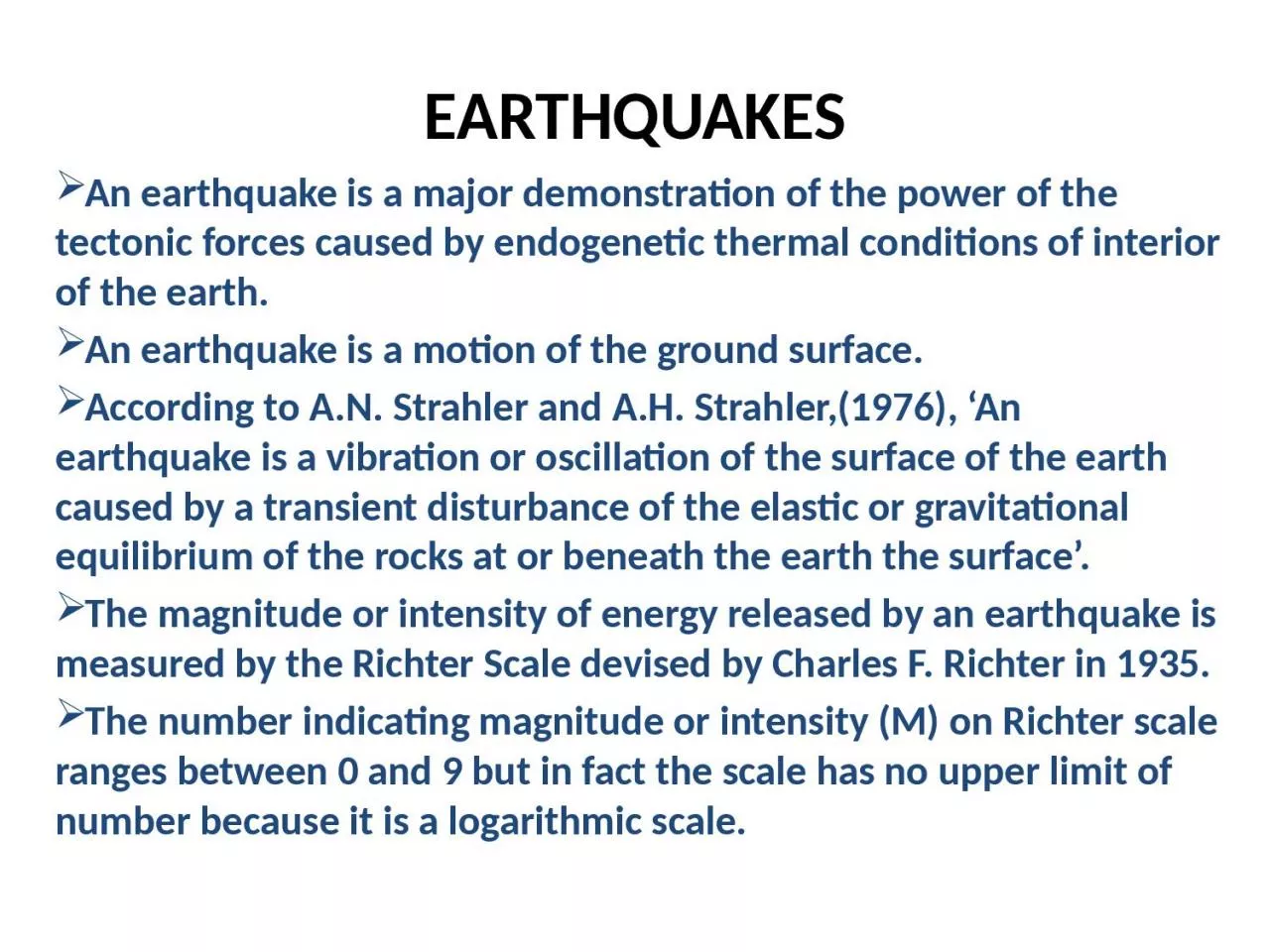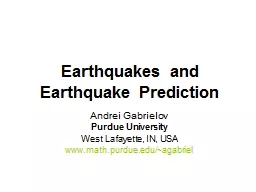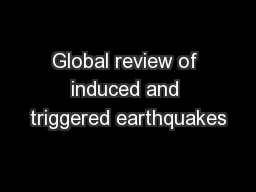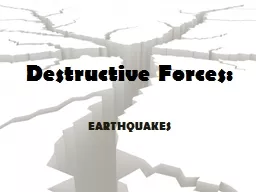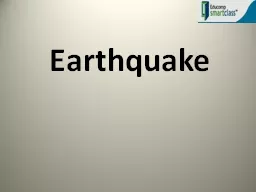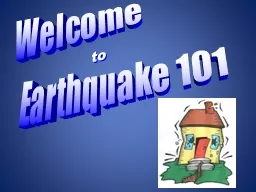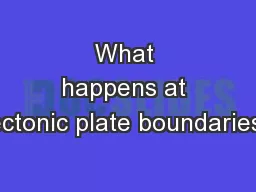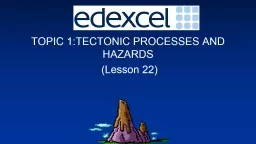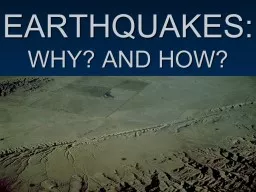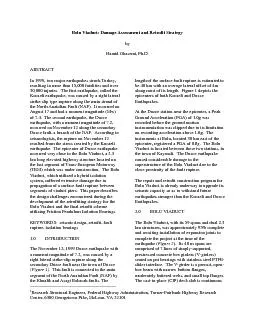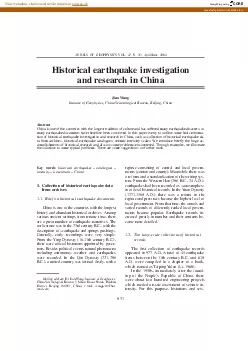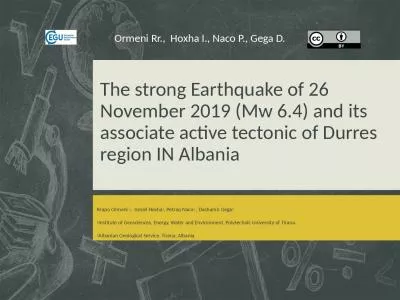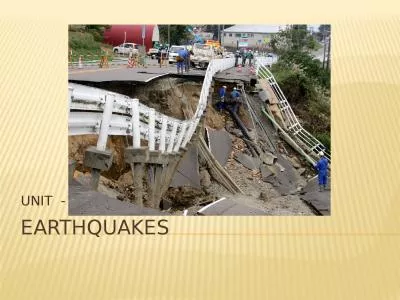PPT-EARTHQUAKES An earthquake is a major demonstration of the power of the tectonic forces
Author : edolie | Published Date : 2022-06-20
An earthquake is a motion of the ground surface According to AN Strahler and AH Strahler 1976 An earthquake is a vibration or oscillation of the surface of the
Presentation Embed Code
Download Presentation
Download Presentation The PPT/PDF document "EARTHQUAKES An earthquake is a major dem..." is the property of its rightful owner. Permission is granted to download and print the materials on this website for personal, non-commercial use only, and to display it on your personal computer provided you do not modify the materials and that you retain all copyright notices contained in the materials. By downloading content from our website, you accept the terms of this agreement.
EARTHQUAKES An earthquake is a major demonstration of the power of the tectonic forces: Transcript
Download Rules Of Document
"EARTHQUAKES An earthquake is a major demonstration of the power of the tectonic forces"The content belongs to its owner. You may download and print it for personal use, without modification, and keep all copyright notices. By downloading, you agree to these terms.
Related Documents

